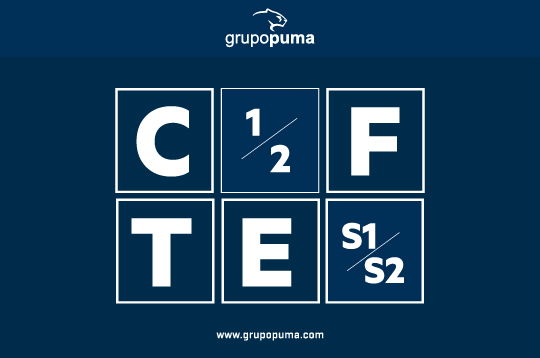THE EUROPEAN STANDARD UNE-EN 12004 (ISO 13007)
07-23-2025At PIDILITE PUMA, we are firmly committed to quality products and excellence. As part of this commitment, all our adhesive mortars comply with current European and international regulations: UNE-EN 12004 (ISO 13007) You may have noticed product classifications such as C2 TE S1, C1 TE, etc., on our packaging, in our documentation, or on our website. In this and upcoming posts, we will explain the meaning behind this coding system in more detail so that you can better understand the performance and rigorous testing that these products undergo.
The UNE-EN 12004 (ISO 13007) European standard applies to tile adhesives used for ceramic or porcelain tiles installed on interior or exterior walls and floors. CE marking for cement-based tile adhesives indicates compliance with European directives.
The purpose of this European/international standard is to classify tile adhesives used in the installation of ceramic or porcelain tiles, enabling correct product selection based on the application.
According to the UNE-EN 12004 (ISO 13007) standard, products are tested and classified based on: adhesion, setting time, slip, and open time.
The first letter in the product classification, which may be “C”, “D”, or “R”, indicates the nature of the tile adhesive:
- Letter C: Cementitious adhesive These adhesives are composed of hydraulic binders, mineral fillers, and organic additives, and are mixed with water or a liquid additive before use.
- Letter D: Dispersion adhesive These adhesives are a mixture of organic binder(s) in aqueous polymer dispersion, organic additives, and mineral fillers. They are supplied ready to use.
- Letter R: Reactive resin adhesive These adhesives consist of synthetic resins, organic additives, and mineral fillers. They harden through a chemical reaction and are supplied in one or more components.
For each type of adhesive (C, D, or R), two classes are defined:
- Class 1: Adhesives that meet the basic adhesion requirements as indicated in the table above.
- Class 2: Adhesives that meet additional adhesion requirements as indicated in the table above.
Letter “F”: Fast setting adhesive mortar.
Letter “E”: Adhesive mortar with extended open minimum time of 30 minutes. Standard adhesive mortars have a minimum open time of 20 minutes; fast-setting adhesive mortar have 10 minutes.
Open time refers to the maximum allowable time between applying the adhesive and placing the tile, to achieve a minimum bond strength of 0.5 N/mm² after 28 days (measured via tensile adhesion testing). This characteristic allows for more flexibility during installation and greater reliability under unfavourable weather conditions (such as wind or elevated temperatures), helping to minimise potential failures.
Slip resistance is another important feature for all three types of adhesives. It refers to the downward movement of a tile due to its own weight when placed on fresh adhesive. If the slip is ≤ 0.5 mm, the adhesive mortar is considered to have reduced slip and is denoted with the letter T. This feature is linked to the fresh consistency of the adhesive and is particularly important for applications on walls.
Additionally, the UNE-EN 12004 (ISO 13007) standard classifies cementitious adhesives (type “C”) by transverse deformation. In other words, it measures their ability to deform when hardened without significant loss of adhesion.
This property is especially important for outdoor applications on facades/walls or floors, or when using large-format tiles.
According to the UNE-EN 12004 (ISO 13007) standard Cementitious adhesives are categorised as:
- S1: Deformable adhesive mortars. Deformation greater than 2.5 mm and less than 5 mm
- S2: Highly deformable adhesives. Deformation equal to or greater than 5 mm.
These “S1” or “S2” adhesive mortars are designed to withstand deformation and stress caused by temperature changes, making them especially suitable for exterior use.
Lastly, there are basic cementitious adhesives that simply carry CE marking and are intended for interior use only. These adhesives are required to meet the following bond strength criteria:
- Initial adhesion ≥0.5 N/mm2
- Adhesion after water immersion ≥ 0.5 N/mm2
For these basic adhesives, it is optional for the manufacturer to test and specify Bond strength after freeze-thaw cycles and Bond strength after heat ageing. The manufacturer may choose not to include these test results or indicate them using specific codes.
